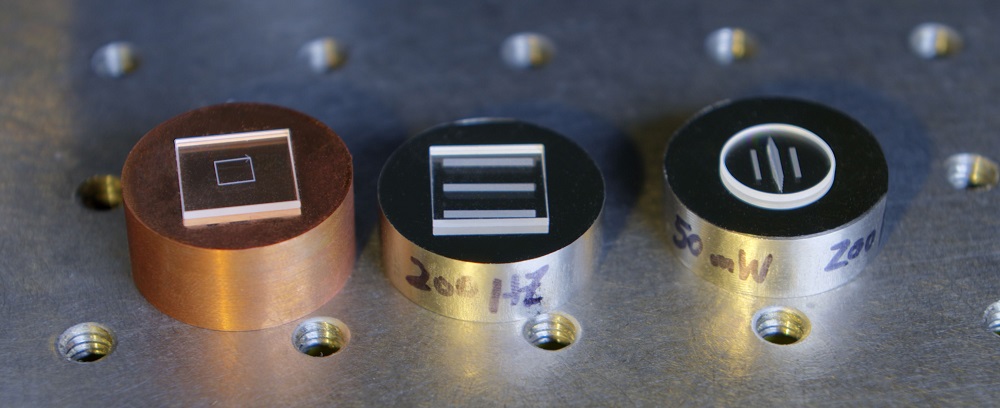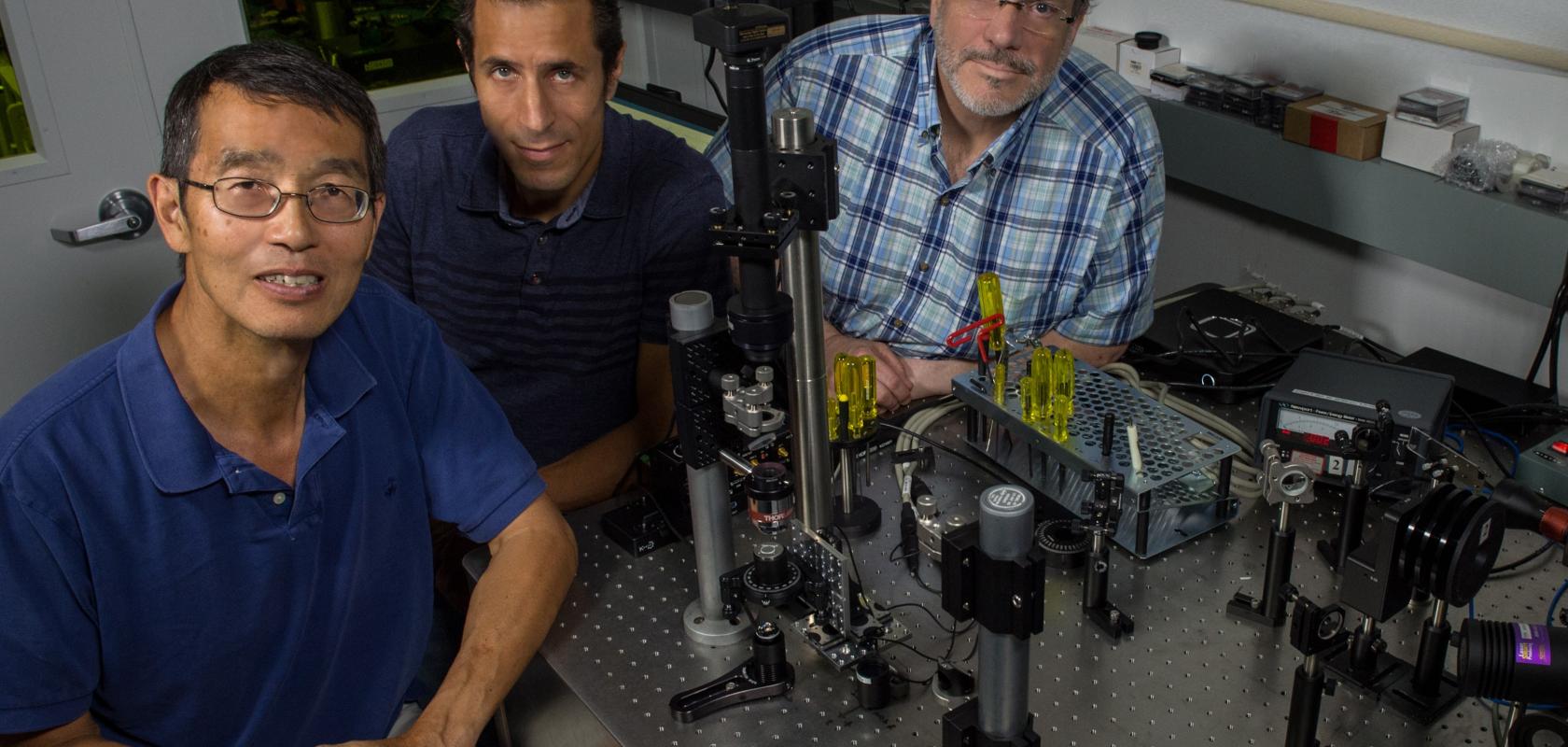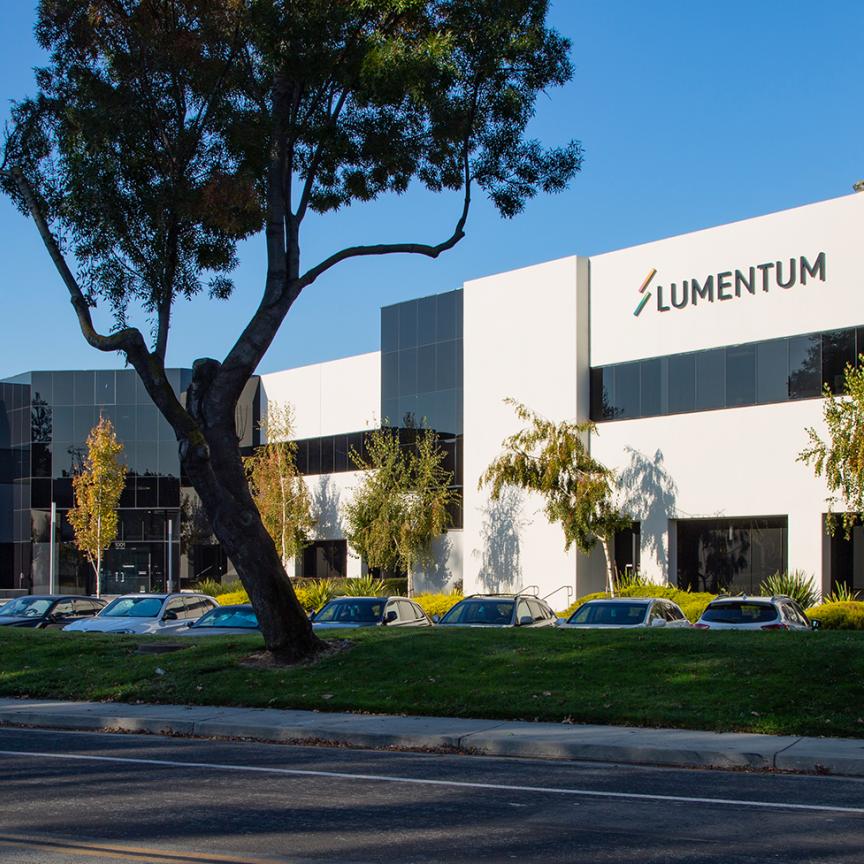A team of optical physicists at NASA’s Goddard Space Flight Center is exploring the possibility of using femtosecond lasers to join dissimilar materials and perform micromachining in the manufacturing of spaceflight instruments.
Due to its short pulses – lasting one quadrillionth of a second – a femtosecond laser is capable of vaporising material precisely without heating the surrounding matter. As a result, the Nasa physicists are able to target the laser and bond dissimilar materials that otherwise couldn’t be joined without using epoxies.
‘It’s not possible to bond glass to metal directly,’ explained Robert Lafon, the physicist leading the Nasa research group. ‘You have to use epoxy, which outgases and deposits contaminants on mirrors and other sensitive instrument components. This could be a serious application. We want to get rid of epoxies. We have already begun reaching out to other groups and missions to see how these new capabilities might benefit their projects.’
The group has already shown that the ultrafast laser can be used to weld glass to copper, glass to glass, and to drill hair-sized pinholes in different materials effectively.
The next stage of their research will explore the joining of more exotic glasses such as sapphire and Zerodur, as well as metals such as titanium, invar, kovar, and aluminium – materials often used in spaceflight instruments. The group is aiming to weld larger pieces of these materials and demonstrate that the laser is effective at adhering windows onto laser housings and optics to metal mounts, among other applications.
The physicists are also exploring the femtosecond laser’s capability in fabricating and packaging photonic integrated circuits (PICs), an emerging technology with applications ranging from communications to optical sensing. While similar to electronic integrated circuits, PICs are fabricated on a mixture of materials, including silica and silicon, and use visible or infrared light, instead of electrons, to transfer information. The research is being supported by the Space Technology Mission Directorate’s Center Innovation Fund programme.
‘This started as pure research, but now we hope to start applying what we have learned to the fabrication of [spaceflight] instruments here at Goddard,’ said Lafon.

The Nasa physicits are using an ultrafast laser to bond dissimilar materials in the manufacture of spaceflight components. Shown here are (from left to right): silica welded to copper; silica welded to invar; and sapphire welded to invar. Credits: NASA/W. Hrybyk
Another application being explored by the group with the ultrafast laser is the micromachining of microscopic features into different materials, such as the hair-sized pinholes they have already drilled into metals. The laser could also be used to etch microscopic channels or waveguides through which light could travel in PICs and laser transmitters. The same waveguides could also allow liquids to flow through microfluidic devices and chips needed for chemical analyses and instrument cooling.
‘Ultrafast lasers offer fundamental changes in how we can microprocess materials,’ commented Ted Swanson, senior technologist for strategic integration at Goddard. ‘The team’s work on this research effort will allow Goddard to adapt this emerging technology to a wide variety of flight applications.’
To this end, the group of optical physicists — between working on NASA’s high-profile laser communication projects that are exploring the use of infrared pulses to transmit data to and from space — plans to compile a library of micromachining and welding capabilities using ultrafast lasers.
‘Once we are able to demonstrate this capability reliably, we will attempt to apply it to existing challenges here at Goddard,’ Lafon concluded. ‘Our initial research is showing that this technology could be applied to a large number of projects across NASA.’
Thumbnail caption: Steve Li (left), Frankie Micalizzi (middle), and Robert Lafon (right) are using an ultrafast laser to bond dissimilar materials and etch microscopic channels or waveguides through which light could travel in photonic integrated circuits and laser transmitters. (Photo Credit: Bill Hrybyk/NASA)


